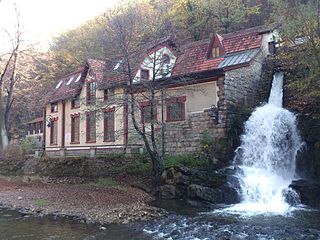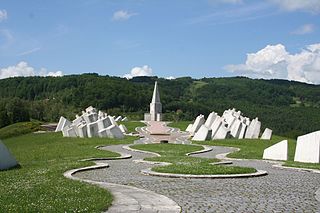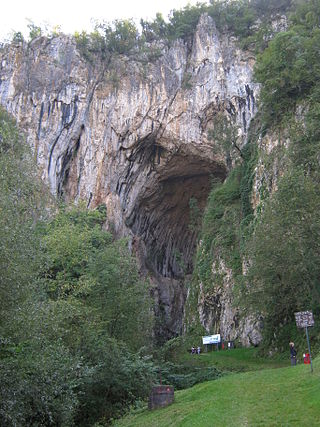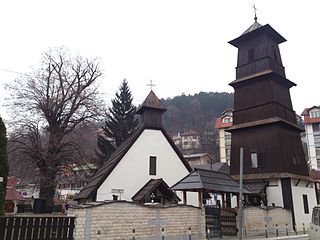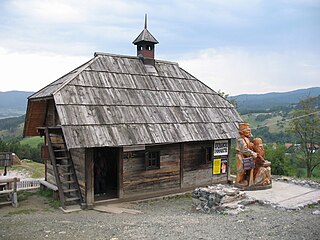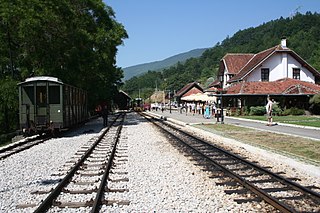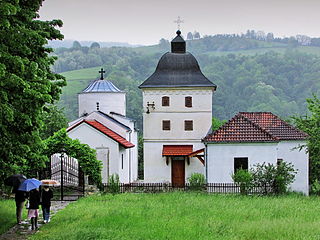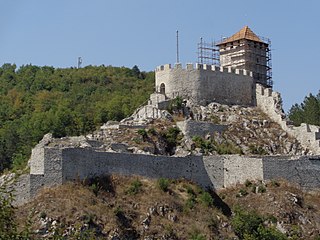9 Sights in Uzice, Serbia (with Map and Images)
Legend
Welcome to your journey through the most beautiful sights in Uzice, Serbia! Whether you want to discover the city's historical treasures or experience its modern highlights, you'll find everything your heart desires here. Be inspired by our selection and plan your unforgettable adventure in Uzice. Dive into the diversity of this fascinating city and discover everything it has to offer.
1. Kustendorf
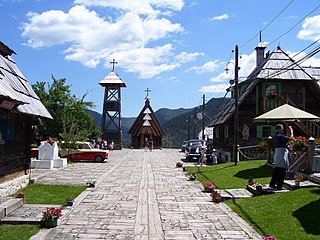
Please credit this with : "White Writer, Wikipedia" in the immediate vicinity of the image. An email to WhiteWriter would be appreciated too. If you would like special permission to use, license, or purchase the image please contact me WhiteWriter to negotiate terms. / CC BY-SA 3.0
Küstendorf, also known as Drvengrad and Mećavnik, is a traditional village that the Serbian film director Emir Kusturica built for his film Life Is a Miracle from 2003 to 2004. It is located near the village of Mokra Gora in western Serbia, in the administrative area of Užice. Kusturica was the 2005 recipient of the Philippe Rotthier European Architecture award.
2. Мала хидроелектрана „Под градом“
Small hydropower "under the city" or MHE "under the city", on the river, in Uzice below the old fort, is the first hydropower plant, 2. August 1900. year, the second hydropower plant and the third public electric central is the second hydro power plant In Serbia. It belongs to the oldest preserved hydropower plants in the world that is trained that even today from their museum "Simens-Halke" generators produce electricity. The hydropower was constantly working from 1900. until 1974. year, when it was overgraded by Belgrade - South Adriatic, a gap was overwhelmed. Not far from the Museum Hydropower in Užice, on the slopes of Zlatibor and Tara, through whose massifs are passing by the unusual route of the narrow track in the shape of a giant eight throughout the same geographical point at the same time different altitude. A nightmon from the construction of hydroelectric power plants, with huge efforts, the facility itself is performed for the building, 2. August 2000. year, was solemnly open and worked because it is of great historical, scientific and technical importance for Serbia and entire The world. The complex "under the city" In addition to the museum-tourist purpose, it is an unofficial educational institution in which practical training of students and students where they get acquainted with basic data on technical and technological development. Near the oldest preserved hydroelectric power plant "under the city", on the river, in just 6 km upstream, there is another hydraulictrana "Turica", launched 1. January 1929. years. Both hydropower plants represent very significant engineering works, which when it comes to when designed and built, they were the most modern facilities of that kind. Based on the decision in 1979. the year was determined for the immovable cultural and cultural monument of great importance.
3. Spomen kompleks Kadinjača
The memorial complex of Kadinjača near Užice, on the pass between the villages of Volujac and Zaglavak, testifies to the November days of 1941 when members of the Workers' Battalion of the Užice Partisan Detachment, commanded by Andrija Djurovic, offered fierce resistance to a far superior enemy who was conducting an offensive on the liberated territory of the "Republic of Užice" in that period. The soldiers of the Workers' Battalion were bravely killed in the Battle of Kadinjača on November 29, 1941. The enemy forces broke through the last defense of free Užice, but the heroism of these heroes was remembered in the times that followed.
4. Potpece Cave
Drežnička Gradina is a mountain in western Serbia, located between cities of Požega and Užice. Its highest peak, Gradina, has an elevation of 932 m (3,058 ft) above sea level. On the cone-shaped hilltop, there is a small stone-built pyramid erected as monument to Yugoslav Partisans died in a battle against German forces in August 1941, at the time of the Republic of Užice.
5. Црква Светог Марка
The St. Mark's Church is a church in the town of Užice, in western Serbia. It is noted for its appearance, as an old, small, mostly wooden church in the town's modern urban setting. Originally constructed in 1721, it was rebuilt in 1828 and is the oldest surviving church in the entire Užice region. It was protected by the state in 1951 and declared a Cultural Monument of Great Importance in 1987. The church is colloquially called by the residents the Small Užice Church.
6. Кућа пророка Тарабића
The Memorial Home of the Prophet Tarabić is located in Kremne, a populated place on the territory of the city of Uzice, three kilometers away from the center of the settlement, on the way to the mountain Tara.
7. Мокра Гора
Railway station Mokra Gora is a station of the former narrow-gauge railway Užice - Višegrad - Sarajevo, and today it is the starting station of the museum and tourist complex Šarganska osmica. It is located in the village of the same name on the territory of the city of Užice.
8. Бела црква Каранска
The White Church of Karan is a Serbian Orthodox parish church in the village of Karan, Užice Municipality, Serbia. It is dedicated to the Annunciation to Mary. The church was listed as a Cultural Monument of Great Importance.
9. Uzice medieval fortress
Uzice city is the medieval fortress was most likely in the second half of the 14th century Vojislava and Altoman Vojinovic, as to protect the Užice and the Karavan, which was connected by the Moravian Valley, Hum and the Coast of the Adriatic Sea, primarily to the Republic of Dubrovnik. . It is located on a high sharp rock that descends steeply in the Đetinje, which is surrounded by three sides and prevents access. The most famous episode in her history took place in November 1373. year when the forces of Kneza Lazar (1371-1389) and Ban company (1353-1391) were supported by King Hungarian Lajos and (1342-1382), which was led by Macvanski Ban Nikola Gorjanski Older in To her extent of the Great Coupan Nikola Altomanovića (1366-1373). After a shorter siege, with the help of cannons and siege devices, Nikola surrendered and there was deterred by the command of Stefan Music, and his countries were distributed by the winners. The fortress was finally abandoned at the end of 1862. year after the Agreement with Knezi Mihaila left her Ottoman military crew, after which, in accordance with the provisions of that Agreement, in the end of winter 1863. was raised in the air and disabled for further military use. Today, other remains of ramparts, tower and buildings in the amount of about one meter are as long as they are reduced by destruction in 1863. years, but also, it may be constituted former appearance of the fort. It is one of the tourist attractions today of Uzice.
Share
How likely are you to recommend us?
Disclaimer Please be aware of your surroundings and do not enter private property. We are not liable for any damages that occur during the tours.
